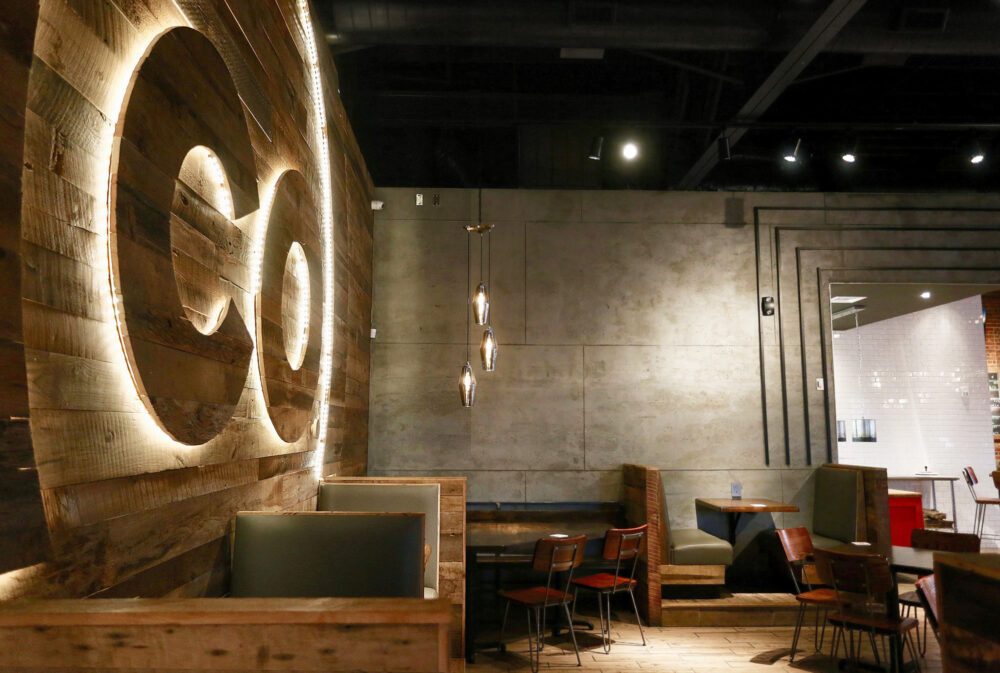Brands require our focus. Are we giving enough of it?
Design isn’t just about aesthetics; it also plays a critical role in communication. Overwhelming visuals, mixed messaging, or complex content can be daunting for viewers. Brandmarks, on average, take 5-7 impressions to be retained by viewers, and that’s before they decide to take any action on that retention. Thoughtfully designed brand materials can offer clarity, making your purpose more straightforward to understand and, ultimately, increasing the trust in the information.
Design also plays a prominent role in how quickly you can communicate. User attention spans in today’s fast-paced marketing platforms continue to lessen. The average human has an attention span of 8.25 seconds according to recent studies – 4.25 seconds less than in 2000. We now need to catch up to the goldfish (9-second attention span) regarding our ability to focus on tasks or objects.
This strengthens a widespread belief that human attention spans are shrinking, often attributed to the rise of the digital age. However, this notion isn’t entirely accurate. Human attention spans have always been finite and selective. Today’s content platforms have indeed introduced a barrage of stimuli, making it appear as though attention spans are diminishing. But in reality, our ability to focus remains essentially unchanged. The key lies in understanding how to capture and maintain attention in a world overflowing with information.
This article delves into the fascinating world of human attention spans, exploring how brands can navigate this complex landscape to establish meaningful connections with their audience.
Understanding the Multitasking Dilemma
One significant change brought about by the digital age is the prevalence of multitasking. People are now accustomed to juggling multiple screens, tasks, and stimuli simultaneously. While this may seem like a challenge for brands trying to capture attention, it also presents an opportunity. Brands can utilize cross-platform marketing strategies to engage consumers across different touchpoints, ensuring they remain on their radar even amidst the multitasking chaos.
The Power of Visual Storytelling
Humans are inherently visual creatures. Studies have shown that the human brain processes visual information faster and more effectively than text. Brands can leverage this by incorporating compelling visuals and storytelling into their marketing strategies. A well-crafted visual story not only captures attention but also creates an emotional connection with the audience, making the brand more memorable.
The Role of Personalization
One-size-fits-all marketing is no longer effective in today’s world. Personalization has become a cornerstone of capturing and retaining consumer attention. Brands can use data-driven insights to tailor their messages and offers to individual preferences, increasing the likelihood of engagement. When consumers feel that a brand understands their needs and preferences, they are more likely to pay attention.
Building Trust and Authenticity
In an age of information overload, consumers are becoming increasingly selective about the brands they engage with. Trust and authenticity are essential in capturing and retaining attention. Brands that consistently deliver on their promises and maintain transparency in their actions are more likely to build a loyal customer base. Trust forms a foundation for long-term relationships, ensuring that attention is not just captured but sustained.
The Power of Engagement
Capturing attention is only the first step. Brands must actively engage their audience to maintain their interest. Interactive content, such as polls, quizzes, and social media challenges, can encourage participation and create a sense of community around the brand. Engagement not only keeps attention alive but also fosters brand loyalty.
Conclusion
Brands that understand and take action on the nuances of the evolving content landscape can thrive. By embracing visual storytelling, personalization, timing, trust-building, and engagement, brands can navigate the intricate world of human attention spans and establish lasting connections with their audience. In this age of information overload, it’s not about the duration of attention but the depth of engagement that truly matters.



